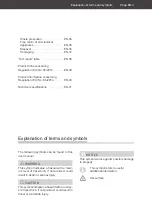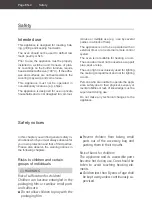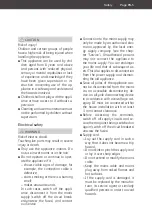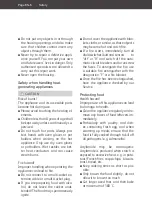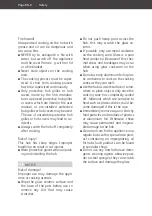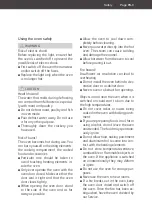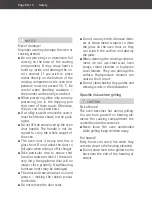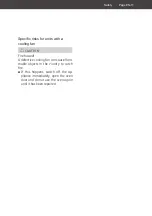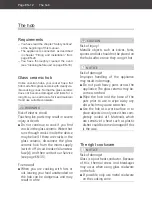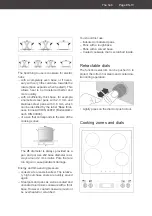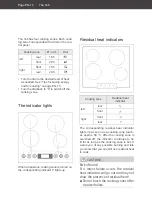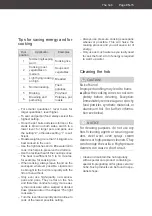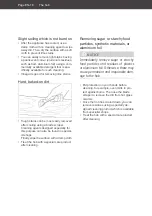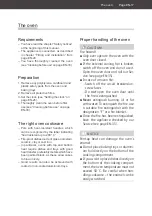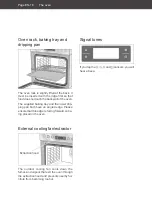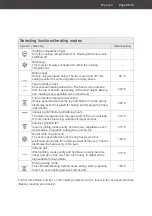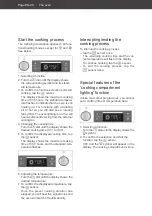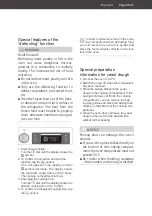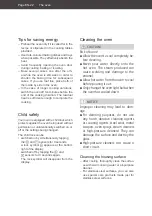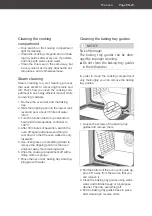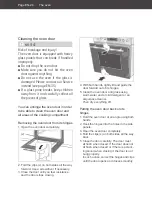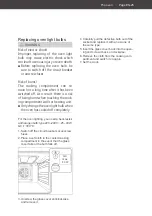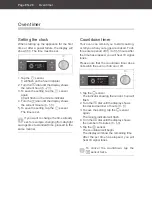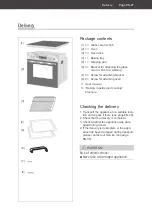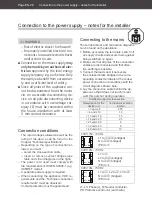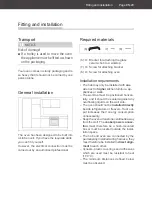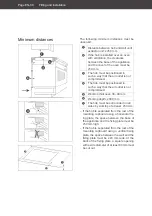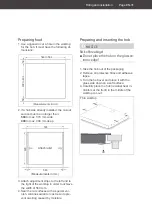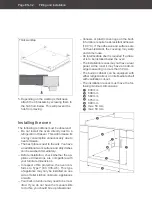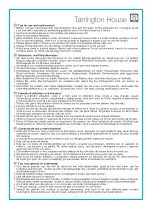
The oven
Page EN-17
The oven
Requirements
– You have read the chapter “Safety notices”
at the beginning of this manual.
– The appliance is connected, as described
in chapter “Fitting and installation“ from
page EN-29.
– You have thoroughly cleaned the oven
(see “Cleaning before use” on page EN-33).
Preparation
1. Remove any polystyrene, cardboard and
plastic safety parts from the oven and
baking trays.
2. Remove all protective films.
3. Set the clock (see “Setting the clock” on
page EN-26).
4. Thoroughly clean the oven before first
use (see “Cleaning before use” on page
EN-33).
The right oven cookware
– Pots with heat-resistant handles, which
can be recognised by the label indicating
“heat resistant up to 280 °C”
– Fire-proof dishes made of glass, porcelain,
ceramic, clay or cast iron
– In particular, ovens with top and bottom
heat require dishes and trays with good
heat transfer, preferably metals which have
been painted black, as these allow cakes
to brown nicely.
– Good results can also be achieved with
coated or non-coated aluminium trays.
Proper handling of the oven
CAUTION!
Fire hazard!
■
Only ever operate the oven with the
oven door closed.
■
If the external cooling fan is broken,
switch off the oven and do not use it.
Open the oven door and call our Ser-
vice (see page EN-35).
■
In case of an oven fi re:
–
Switch off the circuit breakers/un-
screw fuses
–
Do
not
open the oven door until
the fire is extinguished
■
Never
extinguish burning oil or fat
with water! To extinguish the fi re, use
a suitable fi re extinguisher with the
designation “F” or a fi re blanket.
■
Once the fi re has been extinguished,
have the appliance checked by our
Service (see page EN-35).
NOTICE
Pent-up heat can damage the oven’s
enamel.
■
Do not place baking trays or alumini-
um foil directly on the bottom of the
cooking compartment.
■
If you wish to place dishes directly on
the bottom of the cooking compart-
ment, the oven temperature must not
exceed 50 °C. Be careful when han-
dling cookware – the enamel can be
easily scratched.

